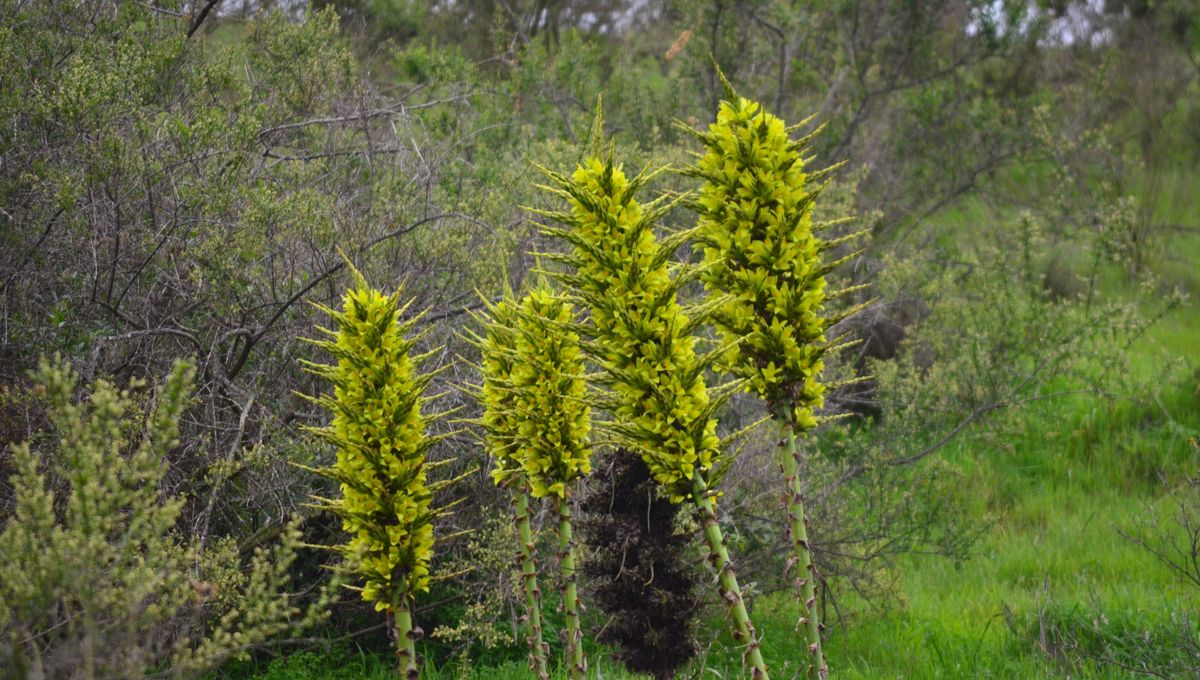
Plants don’t generally have a reputation for being badass. Then again, not many have people heard of Puya chilensis and the rumors of its “sheep-eating” exploits.
P. chilensis is native to central Chile, typically found on the arid hillsides of the Andes at an altitude of 300 to 1,000 meters (980 to 3,280 feet). It’s a member of the bromeliad plant family, meaning it’s a close relative of the pineapple.
However, P. chilensis isn’t as friendly as its fruity family members. The plant’s pointed leaves are armed with sharp spines that can snare sheep, birds, and other passing animals. Eventually, the trapped animals starve to death and decompose at the base of the plant, releasing nutrients that the roots absorb – or that’s the hypothesis, at least.
There’s not much scientific literature on the topic, although there are very similar accounts about another member of the same plant genus that also features barbed foliage: Puya raimondii, better known as the “Queen of the Andes.”
A 1980 study explains how dead birds are often found inside the spiny foliage of P. raimondii. In 17 plants they came across, the researchers found a total of 44 dead birds that had become trapped inside, including a deceased barn owl.
“Virtually all the dead birds were firmly wedged by numerous spines between the closely clustered leaves, or against the trunk at the base of the leaves,” the study authors write.
“The mechanism for this became obvious when we tried (unsuccessfully) to retrieve cadavers for identification. A clothed arm immediately became hooked on several recurved spines. The only way to release the hoods without damaging flesh or garment was to extend the arm further into the plant,” they add.
This curious observation led the researchers to suggest the plant might be obtaining nutrients from the decaying birds. They conclude: “We further hypothesized that the plants might benefit from their association with birds by taking up dissolved nutrients originating from bird droppings, and perhaps from the decomposing bodies of trapped birds.”
Other scientists have speculated that at least three other bromeliad species might also use this “unique nutrient acquisition strategy.” If true, it would suggest that members of the bromeliad family are “protocarnivorous,” a trait that may have led to the evolution of true carnivorous plants, like Venus flytraps and pitcher plants.
Much like P. raimondii, the “sheep-eating” P. chilensis can take a very long time to flower – but it puts on quite a spectacle when it does. It takes around 15 years to bloom, upon which it produces a large yellow that stands up to 2 meters (6 feet 7 inches) high.
Source Link: The Flowering "Sheep-Eater" Plant Has A Formidable Reputation